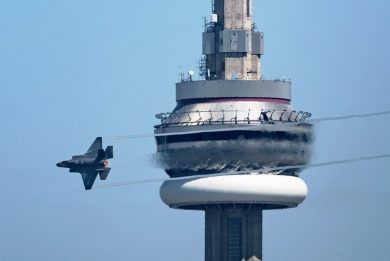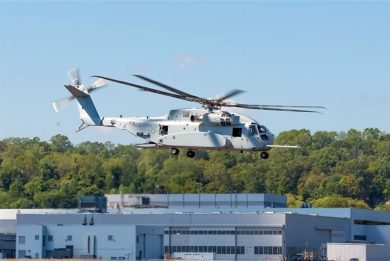PAS 2025 – Sikorsky looks forward to NATO’s next generation helicopter requirement
For the first time Sikorsky, exhibited its S-97 Raider at the Paris Air Show, the helicopter based on the X-2 technology developed by the now Lockheed Martin Company
Frank Crisafulli, Sikorsky’s director of international business development, told EDR On-Line that, “We’re the only ones that are flying the next generation of helicopter.” On display for the first time at Le Bourget was the Sikorsky S-97 Raider compound helicopter based on its X2 technology. Designed to fly at 250 knots (462 km/hr), the X2 features a four-blade contrarotating, coaxial rotor system with fly-by-wire control. A tail-mounted pusher propeller provides the thrust in forward flight. The first flight took place in August 2008, and it achieved its design speed during a flight in September 2010. The prototype was retired the following year.
The S-97 Raider X was Sikorsky’s contender for the US Army’s Future Armed Reconnaissance Aircraft (FARA) which was cancelled in 2024. One of two S-97 prototypes has been retained as a test vehicle and is flown on a regular basis to trial new technologies. Crisafulli said that future developments of the X2 technology would be scalable from 2,000 to 13,000 pounds aircraft, which could be single pilot or unmanned and powered by various engine options. At Le Bourget, engine experts Safran Helicopter Engines, MTU Aero Engines and Avio Aero have joined forces to develop the future European Next Generation Helicopter Engine (ENGHE) for Europe’s next generation of military rotorcraft, scheduled to enter service around 2040.
The X-97’s test pilot, Bill Fall, stressed its negative pitch for landing safety, its high rate of turn and acceleration, its low-speed manoeuvrability, and its ability to fly sideways at up to 50 knots (93 km/hr).
Citing Sikorsky’s commitment in Europe, where it employs more than 5,000 people, Crisafulli said that NATO’s Next Generation Rotorcraft Capability (NGRC) programme, “Is a great capability for us to be involved in, but also it’s really great to see that within the context of NATO and Europe there’s this structure going forward”. The multinational initiative was initially launched by France, Germany, Greece, Italy, and the UK in November 2020. In June 2022 the nations launched the concept stage of the project with the Netherlands joining the programme, while Canada joined in March 2024. The United States and Spain are currently acting as NGRC observers.
In July 2024 the NATO Support and Procurement Agency (NSPA) awarded contracts to Airbus, Leonardo, and Sikorsky for a 13-month study into the future concepts for the NGRC, also known as Concept Study Five. Their responses are to be delivered in October 2025 after which the participating nations will identify their preferred solutions from those concepts presented, before writing the requirements for the NGRC programme in earnest.
Crisafulli said, “In the fall of 2025 we’re actually going to deliver our proposal for what we think should be the next-generation rotorcraft for Europe going forward. After that, in the 2026 timeframe, the concept design phase is going to go on, and in 2028 they’re actually looking through NGRC to do the preparation for the development and the production concept.”
Photos by D. Oliver




